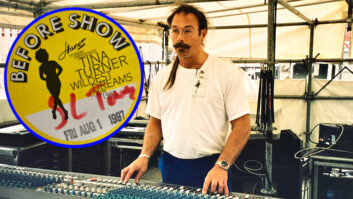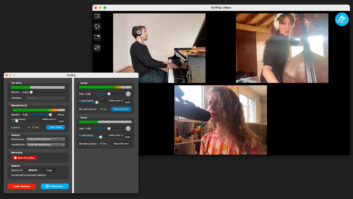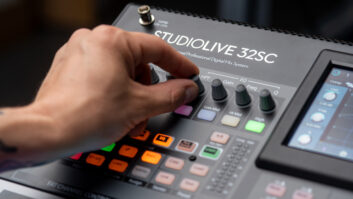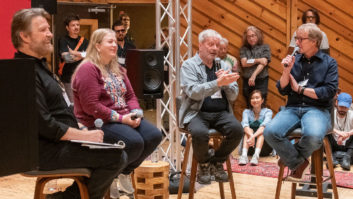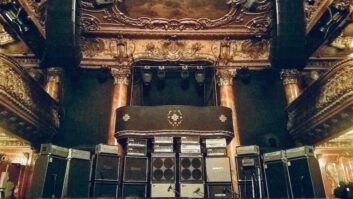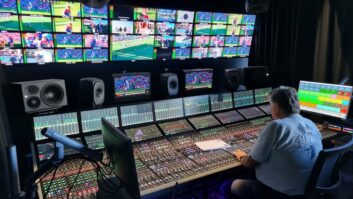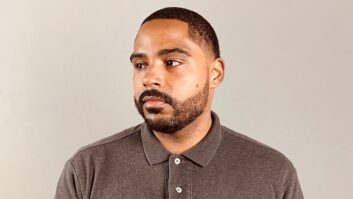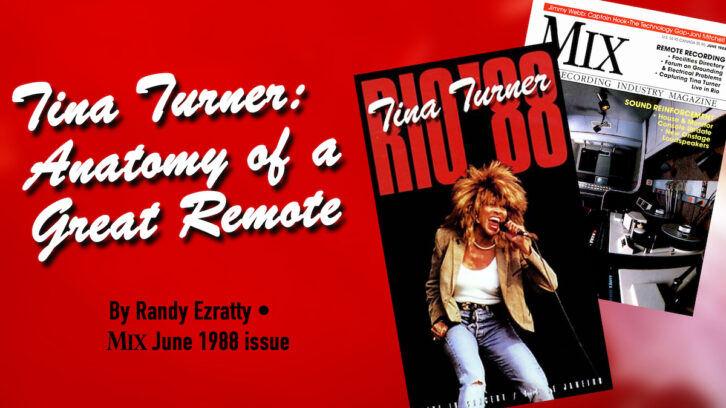 This article, which originally appeared in the June 1988 issue of Mix, was written by Randy Ezratty, the owner of Effanel Music in New York City at the time.
This article, which originally appeared in the June 1988 issue of Mix, was written by Randy Ezratty, the owner of Effanel Music in New York City at the time.
Articles about remote recording projects are often stories of how some live record or soundtrack was made in spite of the circumstances under which it was recorded. The obstacles that can hinder or prevent the recording of a live event include anything from geographical inaccessibility and weather conditions, to technical problems, to uncooperative artists or producers, to physical fatigue and deprivation. Being the owner of NY-based Effanel Music, a remote recording company that specializes in worldwide portable packages (in addition to conventional truck-based systems), I’ve got my share of war stories.
Fortunately, from time to time, I get involved with projects that go so well I realize just how many of the variables and unknowns can be anticipated and controlled, thus resulting in a superior end-product. Just as we remote recording guys are sometimes quick to blame others when things aren’t exactly right (and to pat ourselves on the back for overcoming the aforementioned perils), it happens that a lot of the credit for the good ones goes elsewhere, too. I’ve chosen to write about Tina Turner’s live HBO broadcast and recording from Brazil not only because there are examples of successful and innovative audio design and execution, but because this job exemplified the positive outcome of a team effort. As a matter of fact, Tina’s production company is aptly called Teamwork Productions.
THE PROJECT
In October of last year, I received a call from John Hudson, the owner/engineer of Mayfair Studios in London. I was told that his client, Tina Turner, was going to broadcast her January concert live, via satellite, from Rio’s Giant Maracana Stadium. In addition to live-to-air mix facilities, they needed to record the show so that a refined post-production mix could be used for later rebroadcasts throughout the month. Also, Hudson was in the process of producing and mixing Tina’s soon-to-be-released live album (from London recordings) and he wanted to have the option of including tracks from the Rio concert. The recording was to be 48-track, with approximately 52 inputs from the stage. I sent him specifications and a bid based on the portable 48-track system which we had used in ’87 for Paul Simon in Zimbabwe and for Peter Gabriel in the U.S. and Greece. We had just added 48 channels of Dolby SR to the system, and I included that as part of our package. I assumed that the standard practice of using one recording console for both tracking and stereo (“monitor”) mixes, with effects, would be sufficient.
THE SYSTEM
A few weeks later, I was told that we were on for the Tina Turner job but the specifications had changed. In addition to our basic tracking system, Hudson requested that we design and supply a separate 52-channel mixdown system. He gave us an enormous and very exacting list of processing equipment, plus specifications for a mixdown board (“It will have to be able to do more things simultaneously than my SSL”).
Luckily, Effanel’s John Harris had worked for Maryland Sound Industries prior to joining us and was very familiar with the Yamaha PM3000 concert mixing console. He felt that while this was not a recording console, its numerous VCA sub-groups, effects buses and matrixes would make it the ideal live-to-air mixdown board. AT/Scharff Rentals had a 40-channel PM3000 available along with a smaller Yamaha board for extra channels. AT/Scharff played an important role on this job in that they supplied much of the mixdown equipment and made it available for advance testing and interface prior to its New York departure.
PRE-PRODUCTION
Hudson approved the revised specifications for the expanded system and proceeded to map out a game plan. Three weeks before the show, we received an input list from Clair Brothers‘ Dave Natale, Tina’s house engineer, along with documentation from Hudson that specified the 48-track layout plus every nuance (down to the last patch cord) of the mixdown system. He even sent us 48-track masters from Tina’s London shows so that we could get a feel for what we’d be recording.
Hudson appropriately felt that we—the recording crew—were the ones most qualified to design and implement the stage interface, audience milting and basic tracking, and that he would focus more on his (rather ambitious) live mix.
We at Effanel divided up various responsibilities at this point. Mark Shane was to handle the stage-to-recording interface along with the overall system maintenance. I took responsibility for the 48-track SR recording and John Harris was in charge of the mixdown system. Mayfair staff engineer Mike Ging (good engineer name) would accompany Hudson to assist with effects cues.
DATELINE: RIO
The system arrived in Rio six days before the concert. The Brazilian television network, TV Globo, was providing remote video facilities for the 16-camera shoot. They also provided us with a wonderful 20×24-foot modular steel container placed 280 feet behind the stage, under the seats. This air-conditioned, insulated container served as our dual-system control room. Many other similar containers were provided for video and satellite uplink facilities.
The interface to Clair Brothers’ stage miking was a snap. They provided a hardwired mic split from their stage input box to a 50-foot fan-out. This enabled us to place our input box offstage, well out of everyone’s way. Although we’re always prepared to place our input system on stage, taking the direct feed for ourselves and giving the PA the transformer split, we decided on this one to take the feed and give ourselves the transformer-isolated split. Our Jensen transformers sound fine, and it kept us from disturbing things on stage.
Tina Turner Turns It Up On Her 1997 ‘Wildest Dreams’ Tour
Once again, the high caliber of people with which Tina Turner chooses to surround herself was evident in her Clair Brothers crew. The success or failure of a live recording can very much depend on the artist’s concert production team, especially the sound crew (maybe that’s why everyone at Effanel is a former live-sound mixer). We’ve always had good experiences with Clair crews and Tina’s was no exception. This PA crew had a better grip on live recording than a lot of recording engineers that we run into.
Audience milking was a bit of an ordeal. Maracana Stadium is the world’s largest, and we were told that we’d be milking the largest crowd ever assembled to hear one artist perform—”and it had better sound like it.”
Almost 200,000 screaming Brazilians. It took a full two days (in 105-degree heat) to run the half-mile of cable it took to place 10 audience microphones in stereo pairs at varying distances from the stage. The 10 mics were submixed and limited (a formula borrowed from Peter Gabriel’s engineer, Kevin Killen) to four tracks.
THE ULTIMATE CROWD LOOP
John Hudson was concerned that when bringing up the crowd level during the show, he’d get too much PA bleed, thus throwing his mix balance off. As a precaution, we got the crowd to cheer and yell “Tina Turner” before the show (without anything coming out of the PA). A nice long sample of this random cheering was locked into a stereo AMS for possible use during the live TV mix. As it turned out, the crowd overpowered the PA on the audience mics. Our 180,000-voice sample was unnecessary (and unused).
THE DUAL-CONSOLE, SIMULTANEOUS RECORD/MIXDOWN SYSTEM
John Hudson’s simultaneous record/ mixdown plan made sense from every angle:
- Quality—By having a dedicated mixdown system on-site, it was possible to approach the live-to-air mix with the same facilities one would use in a studio situation, without the inevitable compromise that comes with a conventional one-board, track/mix configuration. Hudson hoped that with sufficient planning, a proper mixdown setup and a good performance, his live mix would not only sound great on the satellite premiere but be good enough to use for the re-broadcasts. It was.
- Cost—Although the budget for audio on this job had already been stretched to the limit by the prospect of bringing 7,000 pounds of multi-track equipment and crew 6,500 miles, it was decided that post-production audio costs could be greatly reduced by finishing the job on-site. The cost of bringing everybody back to England for mixing and potential overdub/fixes was far more than the cost of bringing a few thousand pounds of additional equipment for a couple of extra days in Rio. (A selfless gesture on Mr. Hudson’s part, since he owns the very pricey studio in which post-production would have taken place.)
It was decided that the best way to provide signal simultaneously to both the recording and the mixdown systems was to amplify and bus mic signals for tracking and then split the track-out simultaneously to the multitrack recorders and, at line level, to the mixdown console. The Dolby “To Console” output was chosen as the split point.
There were a few good reasons for choosing this method rather than splitting the microphones twice (feeding the mixdown system all 52 inputs at mic level). One, we felt that the microphone preamps in our recording console sounded better than those in the mixdown console. Two, it made things easier and quicker for Hudson to receive premixed “tracks” and stereo pairs. And three, it afforded us the invaluable opportunity to record the Tina Turner dress rehearsal the night before and then, by simply playing the 48-track recording back through the Dolbys, rehearse the live mix (with the astounding “line-in” fidelity of SR) as much as we wanted prior to showtime the following day.
TEAMWORK
The broadcast sounded great. As it turned out, no audio post-production was necessary. Our mixdown session, scheduled for the following day, was actually a listening party. Fortunately, all of our hard work and thorough preparation paid off in a big way. As it should be, the concert itself was the easiest part of the project.
It was a very special night indeed: fireworks, camera-equipped helicopters, and a record-breaking crowd singing along with Tina Turner. It was exciting being part of such a dramatic peak in her amazing career.
